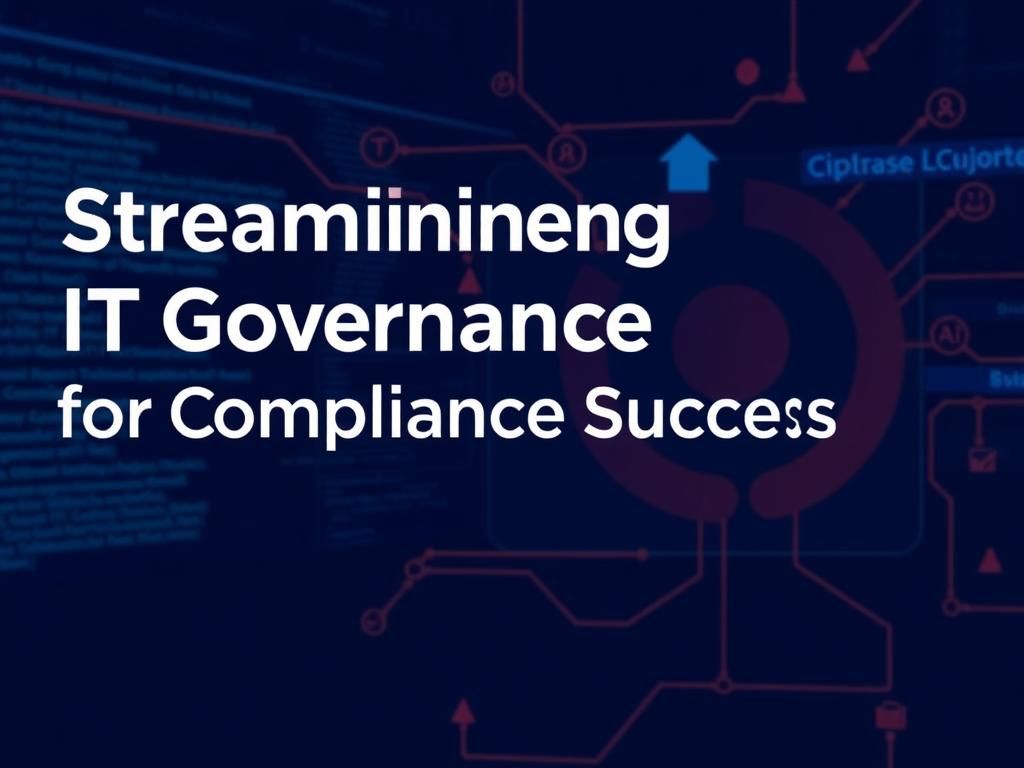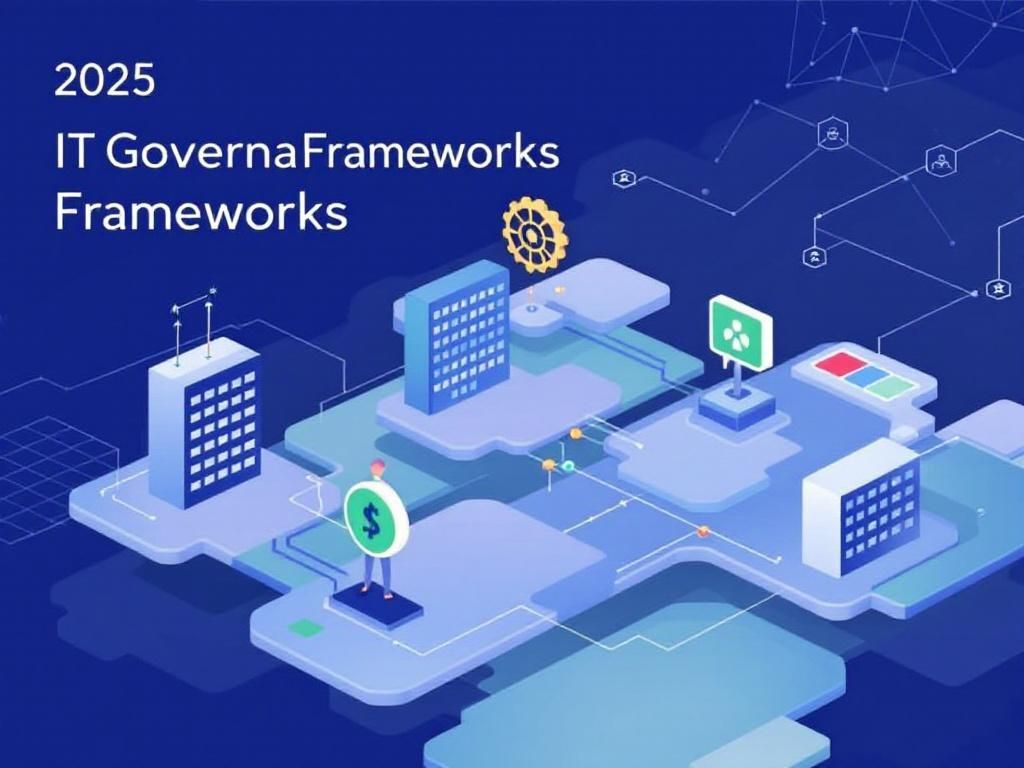Mastering IT Governance in Regulated Industries
Explore effective strategies for mastering IT governance in regulated industries to ensure compliance and enhance operational efficiency in 2025.

As businesses navigate an increasingly complex landscape of regulations, mastering IT governance has become paramount for organizations operating in regulated industries. The convergence of technology and compliance is not merely a challenge but also an opportunity to enhance operational efficiency, protect sensitive data, and promote a culture of accountability. This article explores the core principles of IT governance, the specific challenges faced by regulated industries, and the best practices to establish a robust governance framework.
Table of Contents
Understanding IT Governance
IT governance refers to the processes and structures that ensure the effective and efficient use of IT in enabling an organization to achieve its goals. It encompasses several key areas:
- Alignment with Business Goals: Ensuring that IT strategies support overall business objectives.
- Risk Management: Identifying, assessing, and mitigating risks associated with IT operations.
- Resource Management: Efficient management of IT resources, including personnel, hardware, and software.
- Performance Measurement: Evaluating IT performance against set benchmarks and metrics.
Challenges in Regulated Industries
Organizations in regulated industries such as finance, healthcare, and energy face unique challenges that complicate IT governance:
1. Complexity of Regulations
Regulations vary significantly by industry and region, necessitating a comprehensive understanding of local, national, and international laws. Key regulations include:
| Industry | Regulatory Framework | Key Focus Areas |
|---|---|---|
| Finance | Basel III, Dodd-Frank Act | Capital adequacy, risk management |
| Healthcare | HIPAA, HITECH | Data privacy, security |
| Energy | FERC, NERC | Reliability standards, cybersecurity |
2. Data Security and Privacy
The prevalence of data breaches and cyber threats necessitates stringent security measures. Organizations must implement robust systems to protect sensitive information while adhering to privacy laws.
3. Resource Constraints
Many organizations struggle with limited resources for IT governance, including budget constraints and a shortage of skilled personnel. Efficient utilization of available resources is crucial to maintaining compliance.
Best Practices for IT Governance in Regulated Industries
Implementing effective IT governance requires a strategic approach tailored to the specific needs of regulated industries. Here are some best practices to consider:
1. Establish a Governance Framework
A robust governance framework provides a structured approach to managing IT operations and compliance. Consider the following components:
– **Policies and Procedures:** Develop clear policies that address compliance, risk management, and data security.
– **Roles and Responsibilities:** Define roles for IT governance, ensuring accountability at all levels of the organization.
– **Stakeholder Engagement:** Involve key stakeholders across the organization to foster a culture of compliance and governance.
2. Implement Risk Management Strategies
Effective risk management is essential for navigating the regulatory landscape:
– **Risk Assessment:** Conduct regular assessments to identify and evaluate potential risks.
– **Mitigation Plans:** Develop and implement strategies to mitigate identified risks, including technological solutions and personnel training.
3. Continuous Monitoring and Reporting
Establish mechanisms for ongoing monitoring of IT performance and compliance:
– **Audit Trails:** Maintain comprehensive logs of all IT activities to facilitate auditing and compliance checks.
– **Regular Reporting:** Create standard reporting procedures to keep stakeholders informed about compliance status and risk management efforts.
4. Leverage Technology
Utilizing advanced technologies can enhance governance efforts:
– **Automation:** Implement automated tools for compliance monitoring, reporting, and data protection.
– **Analytics:** Utilize data analytics to gain insights into IT performance and compliance metrics.
5. Training and Awareness
Investing in training programs for staff is crucial in fostering a culture of compliance:
– **Regular Training Sessions:** Conduct training on relevant regulations and best practices for all employees.
– **Awareness Campaigns:** Launch awareness campaigns to highlight the importance of IT governance and compliance.
Measuring Success in IT Governance
Success in IT governance can be measured through various metrics, including:
– **Compliance Rate:** Percentage of compliance with regulatory requirements.
– **Incident Response Time:** Average time taken to respond to security incidents.
– **Audit Findings:** Number and severity of findings from internal and external audits.
Key Performance Indicators (KPIs)
Establishing KPIs is essential for tracking progress and making informed decisions. Consider the following KPIs:
| KPI | Description | Target Value |
|———————–|———————————————–|——————-|
| Compliance Rate | Percentage of compliance with regulations | 95% |
| Incident Response Time | Average time to resolve incidents | < 24 hours |
| Training Completion Rate | Percentage of staff completing training | 100% |
The Future of IT Governance
As we look towards 2025, the landscape of IT governance in regulated industries is expected to evolve significantly. Factors such as:
– **Emerging Technologies:** AI, machine learning, and blockchain will play a transformative role in enhancing compliance and security.
– **Evolving Regulations:** Organizations must stay ahead of changing regulations and adapt their governance frameworks accordingly.
– **Globalization:** As companies expand internationally, the complexity of compliance will increase, necessitating a more integrated approach to governance.
Conclusion
Mastering IT governance in regulated industries is a multifaceted endeavor that requires a strategic approach, continuous monitoring, and a commitment to compliance. By understanding the unique challenges faced and implementing best practices, organizations can not only comply with regulations but also leverage their governance frameworks to drive business success. As we approach 2025, organizations must remain vigilant and prepared to adapt to the ever-changing landscape of technology and regulation.
FAQ
What is IT governance in regulated industries?
IT governance in regulated industries refers to the framework and processes that ensure IT investments support business goals while complying with industry regulations and standards.
Why is IT governance important for regulated industries?
IT governance is crucial for regulated industries as it helps mitigate risks, ensures compliance with laws, and enhances overall organizational performance.
What are the key components of IT governance?
Key components of IT governance include strategic alignment, risk management, resource management, performance measurement, and compliance management.
How can organizations improve their IT governance practices?
Organizations can improve IT governance by adopting best practices, conducting regular audits, providing training, and leveraging technology to enhance transparency and accountability.
What are the challenges of implementing IT governance in regulated industries?
Challenges include navigating complex regulations, aligning IT with business objectives, managing stakeholder expectations, and ensuring continuous compliance amid changing laws.
How will IT governance evolve by 2025 in regulated industries?
By 2025, IT governance in regulated industries is expected to evolve with increased automation, greater emphasis on data privacy, and enhanced frameworks for managing emerging technologies.








